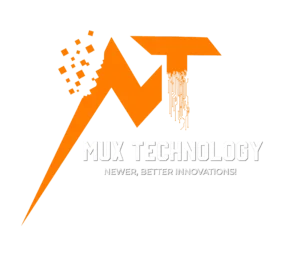An era dominated by digital verbal exchanges and transactions necessitates secure and private statistical exchanges. Enter cryptography systems, the guardians of our digital realm. These complex algorithms and protocols are crucial for safeguarding the confidentiality and integrity of sensitive data. To apprehend its importance and functionality, let’s delve into the “What is a Cryptosystem?” world.
Understanding Cryptography
The art and technological know-how of securing communication are at the heart of every cryptosystem. Employing mathematical algorithms, cryptography transforms readable facts into an unintelligible shape called ciphertext, which those with the perfect key can decipher. Cryptography is the cornerstone of record safety in the digital age, safeguarding records from prying eyes and malicious actors.
The Evolution of Cryptography
The use of secret codes and ciphers to protect messages can be traced back to ancient civilizations. Over the centuries, the sector has advanced substantially, adapting to the improvements in generation. From easy substitution ciphers to complicated mathematical algorithms, the adventure of cryptography displays the perpetual hand’s race among safety features and the equipment to breach them.
Types of Cryptography
In cryptography, there are two essential strategies: symmetric and asymmetric cryptography. Symmetric cryptography uses the same key for both encryption and decryption processes. In contrast, asymmetric cryptography employs a couple of public and private keys to improve security by isolating these approaches. Understanding the strengths and weaknesses of every kind is important for designing effective cryptosystems.
What is a Cryptosystem?
A cryptosystem is a complete framework integrating cryptographic techniques with stable conversation and data. It encompasses the algorithms, keys, and protocols governing their use. This complex aggregate guarantees that records stay confidential, unaltered, and available to legal entities.
Key Components
The performance of a cryptosystem lies in the synergy of its additives. Algorithms dictate the mathematical techniques used for encryption and decryption; keys act as the secret codes governing these approaches; and protocols define the policies for their software. A nicely designed cryptosystem cautiously balances these factors to reinforce the security of the virtual channel.
How Cryptosystems Work
During encryption, the plaintext is transformed into ciphertext, and vice versa during decryption in a cryptosystem. The key, whether or not shared or asymmetrically paired, is the linchpin. As records traverse the digital channels, the cryptosystem guarantees that the handiest people with the right credentials can unravel the encrypted records, maintaining the confidentiality and integrity of the communication.
Real-World Applications of Cryptosystems
Cryptosystems have permeated various domain names as the guardians of touchy records in banking transactions, healthcare information, and army communications. Their ubiquity extends to secure online shopping, email communication, or even the transmission of presidential secrets, underscoring their indispensable function in our interconnected world.
Cryptosystems in Digital Security
In digital security, cryptosystems shape an impregnable barrier against cyber threats. They thwart unauthorized access, prevent statistics tampering, and ensure the trustworthiness of digital transactions. As cyber-attacks become more sophisticated, the role of cryptosystems in fortifying digital defenses becomes increasingly vital.
Cryptosystems in Cryptocurrency
In the realm of cryptocurrency, where the stakes are excessive, and decentralization is a cornerstone, cryptosystems play a pivotal role. They facilitate secure transactions, protect wallet statistics, and ensure the integrity of the blockchain era, making them integral to the flourishing virtual economic system.
Challenges and Limitations
Despite their prowess, cryptosystems aren’t invincible. The upward push of quantum computing poses a powerful assignment, threatening traditional cryptographic strategies. Additionally, the human component, such as poor key management and implementation flaws, can compromise the robustness of cryptosystems.
Quantum Computing and Cryptosystems
The advent of quantum computing heralds a new era in the cryptographic landscape. While quantum computing can interrupt present-day encryption algorithms, it also sparks the improvement of quantum-resistant cryptographic techniques. The race to stay in advance on this quantum hands race is a defining mission for the future of cryptosystems.
Future of Cryptosystems
As technology advances, the future of cryptosystems holds promise. Innovations in quantum-resistant cryptography, the blockchain era, and synthetic intelligence will shape the panorama of digital safety. The adaptability of cryptosystems will determine their relevance in the ever-evolving cybersecurity domain.
Choosing the Right Cryptosystem
Selecting the correct cryptosystem requires a nuanced understanding of precise needs and capability threats. Factors including key management, scalability, and resistance to emerging technology should be considered cautiously. A tailor-made technique ensures that the selected cryptosystem aligns seamlessly with the necessities of the digital environment it seeks to protect.
Conclusion
Cryptosystems are our virtual international guardians in the complicated dance of information transmission and protection. Understanding their evolution, additives, and packages is vital for navigating the complexities of digital communication and safeguarding sensitive information. As we embody the future, the resilience and adaptability of cryptosystems might be pivotal in preserving the integrity and confidentiality of our digital interactions.








